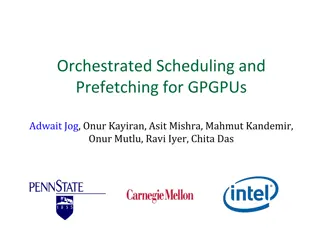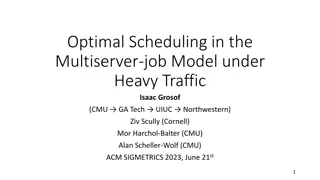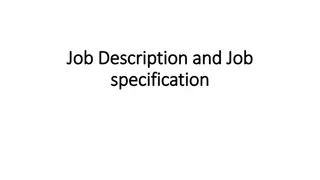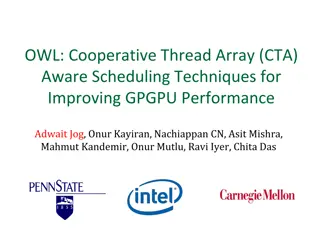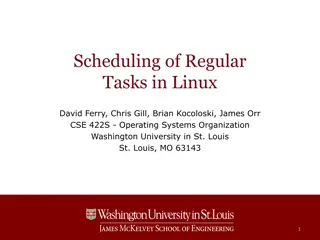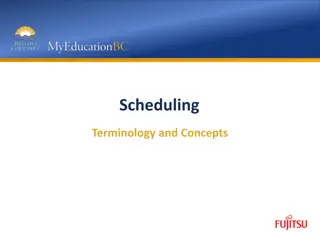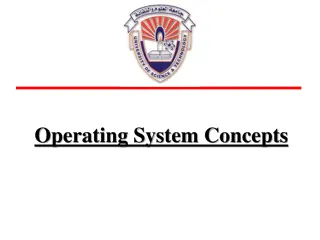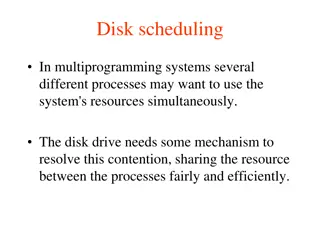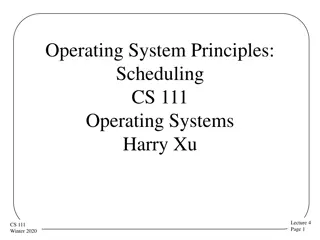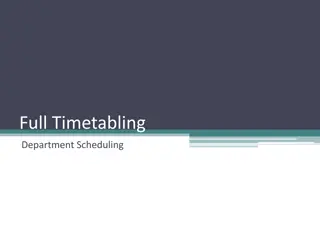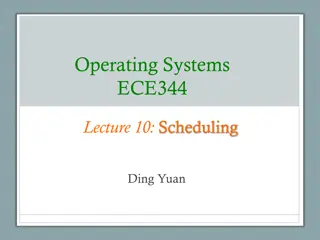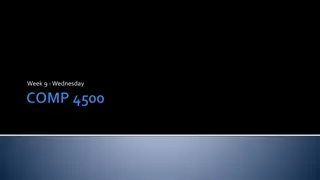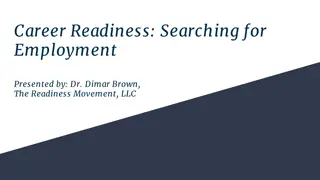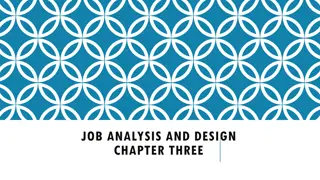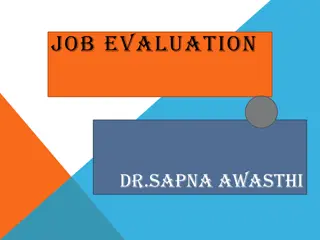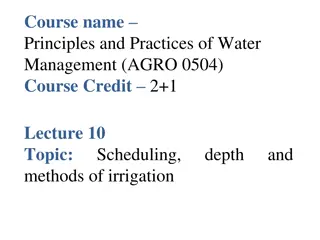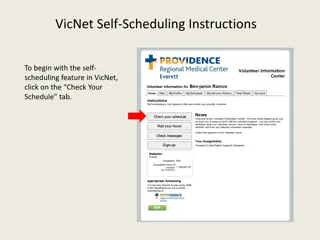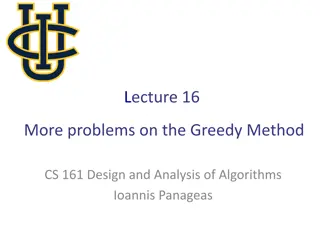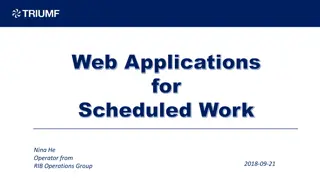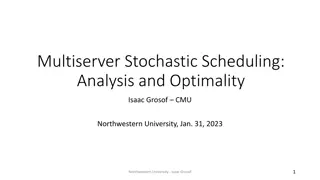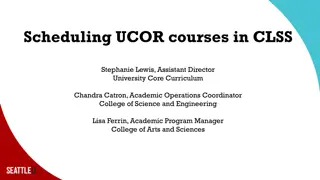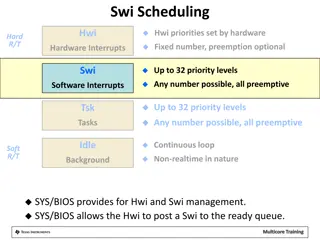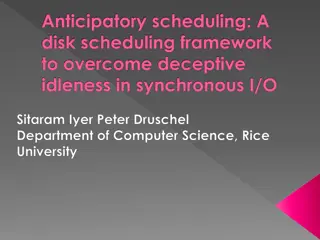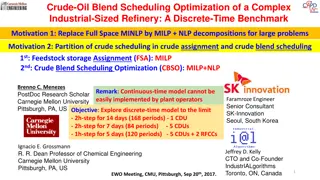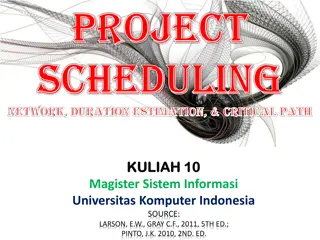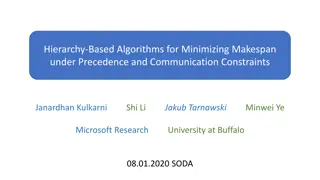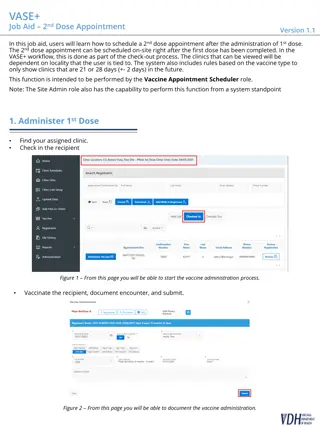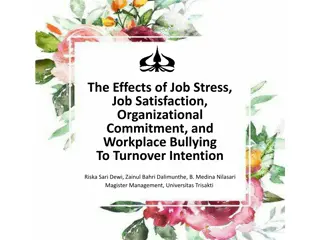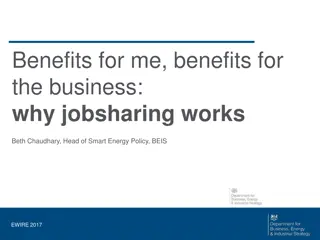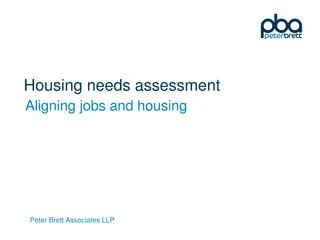Improving Job Scheduling with Nudge Policy
Explore the innovative Nudge policy for stochastic improvement upon First-Come-First-Served (FCFS) scheduling. The Nudge policy introduces a new approach with better performance tradeoffs compared to traditional scheduling methods. Discover how Nudge outperforms FCFS across various job size distributions and tail probabilities, offering a more efficient and effective solution for job scheduling.
Download Presentation

Please find below an Image/Link to download the presentation.
The content on the website is provided AS IS for your information and personal use only. It may not be sold, licensed, or shared on other websites without obtaining consent from the author. Download presentation by click this link. If you encounter any issues during the download, it is possible that the publisher has removed the file from their server.
E N D
Presentation Transcript
Nudge: Stochastically Improving Upon FCFS Isaac Grosof CMU Kunhe Yang Tsinghua University Ziv Scully CMU Mor Harchol-Balter CMU 1
M/G/1 Scheduling Poisson arrivals, arrival rate: General job size distribution: S, i.i.d. Response time: T Q: How should we schedule? 2
Baseline: First-Come First-Served FCFS: Simple, practical, good theoretical properties Threshold t 0 20E[S] 40E[S] 60E[S] 1 FCFS is weakly optimal: ? ?????> ? ~ C? ??, best possible . Holds whenever S is light-tailed. 10-2 Tail prob. P(T>t) PLCFS 10-4 SRPT Tradeoff SPT FCFS 10-6 Weakly optimal! Setting: S ~ Hyperexponential with C2 =3, =0.4 3
FCFS versus SRPT FCFS FCFS: Large or small, similar response time 4
FCFS versus SRPT SRPT L L S FCFS: Large or small, similar response time 5
FCFS versus SRPT SRPT L L FCFS: Large or small, similar response time 6
FCFS versus SRPT SRPT L L S FCFS: Large or small, similar response time 7
FCFS versus SRPT SRPT L L S S FCFS: Large or small, similar response time SRPT: Helps small jobs, better P(T>t) for small t. Delays large jobs, worse P(T>t) for large t. 8
Fundamental question of tradeoffs All previous policies have tradeoffs: Better than FCFS at small t, worse than FCFS at large t. Is that inevitable? Is it possible to beat FCFS everywhere? ( ?) Yes, with Nudge! 9
Nudge: Stochastic Improvement We introduce a new policy: Nudge Threshold t 0 20E[S] 40E[S] 60E[S] 1 We prove: ? ??????> ? < ? ?????> ? ?, for all light-tailed job size distributions S. 10-2 We prove Nudge has better asymptotic tail: ? ??????> ? ~ C ? ??. Same , better C . Previously conjectured to be impossible [WZ 12] Tail prob. P(T>t) 10-4 12% improvement FCFS 10-6 Nudge Setting: S ~ Hyperexponential with C2 =3, =0.4 10
Our contribution: Nudge S L S S Default: FCFS Classify jobs as small or large by size When small arrives, if large is last in queue, small nudges ahead of large Small Large Job size distribution 11
Our contribution: Nudge S Nudged! L L S S S Default: FCFS Classify jobs as small or large by size When small arrives, if large is last in queue, small nudges ahead of large Large can only be nudged once. Small Large Job size distribution 12
Our contribution: Nudge Nudged! L L S S S S Default: FCFS Classify jobs as small or large by size When small arrives, if large is last in queue, small nudges ahead of large Large can only be nudged once. Small Large Job size distribution 13
Nudge intuition: Jack and the Giant Nudge policy: Jack gets to go ahead of the giant, 14
Nudge intuition: Jack and the Giant Nudge policy: Jack gets to go ahead of the giant, but nobody else gets to. Nudge policy: Jack gets to go ahead of the giant, 15
Proof intuition FCFS Want to show: ? ??????> ? < ? ?????> ? ? L S 2 # Jobs with T > t 1 0 ???? ?????? ???? ?????? Threshold t 16
Proof intuition Nudge Nudged! Want to show: ? ??????> ? < ? ?????> ? ? S L Nudge degrades Nudge improves! 2 # Jobs with T > t 1 0 ????? ???? ????? ?????? ?????? ???? ?????? ?????? Threshold t 17
Proof intuition: One t, many nudges t T Threshold t Want to show: Rate of improve exceeds degrade. Key idea 1: Rates of improve and degrade determined by FCFS tail and pdf. Key idea 2: Bound FCFS tail and pdf relative to limiting exponential. Bounds imply more improve than degrade, given correct small and large cutoffs. Tail prob. P(T>t) FCFS 18
Empirical results 8% Bounded Lomax 6% Exponential Hyperexponential Tail improvement ratio: 1 ? ??????> ? ?(?????> ?) 4% Uniform 2% 0 0 5E[S] 10E[S] 15E[S] 20E[S] Threshold t Load =0.8 19
Future directions What about 2+ swaps per job? Constant # is important. What range of size cutoffs work? Single threshold, all jobs either large or small? Beyond FCFS, what other policies can be improved everywhere? Current cutoffs: Future result? Large Small Small Large Job size distribution Job size distribution 20
Conclusion Introduce policy called Nudge. First policy to achieve stochastic improvement over FCFS, for any light-tailed job size distribution. First policy to achieve multiplicative asymptotic improvement over FCFS. 8% Bounded Lomax S Exponential 6% Hyperexponential 4% L Uniform S S 2% 0 0 5E[S] 10E[S] 15E[S] 20E[S] 21


